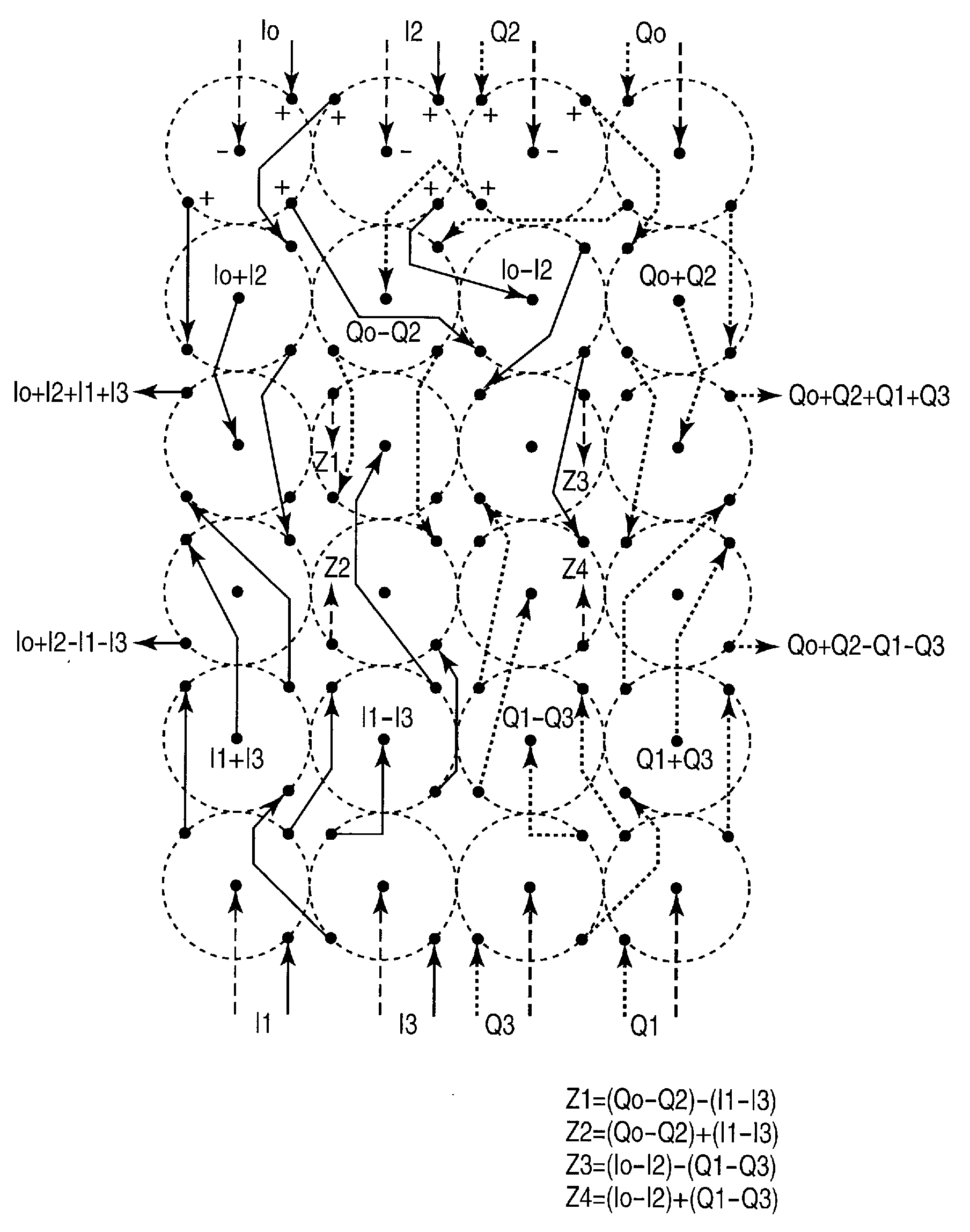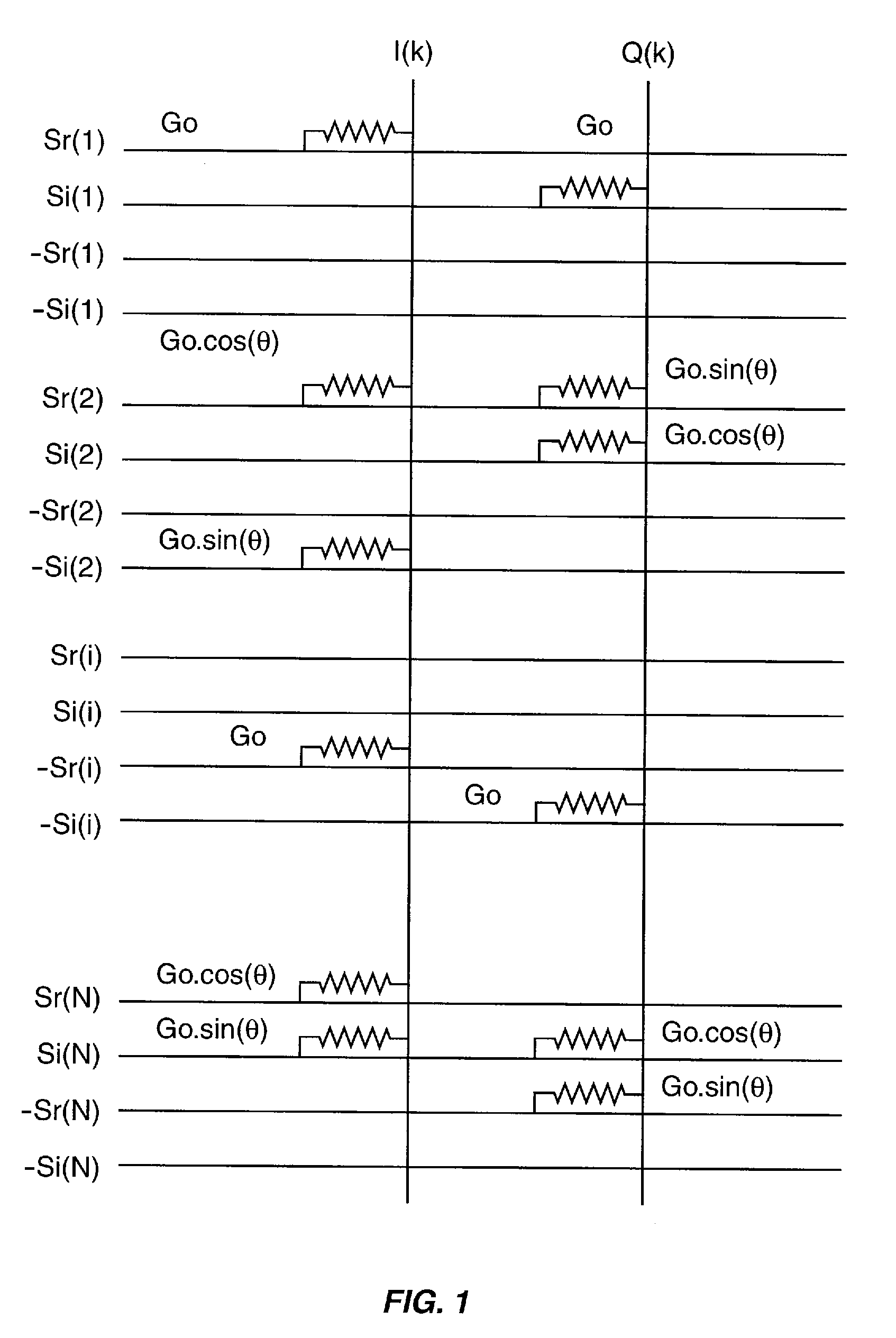Passive Fourier Transform Circuits and Butler Matrices
a fourier transform circuit and butler matrix technology, applied in the field of radio frequency circuits, filters, mobile communications network stations, satellites, etc., can solve the problems of a small, battery-powered device such as a cellphone, the frequency with which ffts of this size are processed, and the computational burden of ffts of this size is significant, so as to reduce throughput losses
- Summary
- Abstract
- Description
- Claims
- Application Information
AI Technical Summary
Benefits of technology
Problems solved by technology
Method used
Image
Examples
Embodiment Construction
[0049]A coupling circuit according to the present invention comprises passive analog components for coupling a transceiver to an antenna, such as an antenna array. The coupling circuit transforms an input signal into an appropriate format for each element of the antenna array to perform a Discrete Fourier Transform (DFT) on the input signal, a Fast Fourier Transform (FFT) on the input signal, and / or to implement a Butler matrix.
[0050]The coupling circuit comprises a coupling network having a plurality of inputs and a plurality of outputs, where the inputs provide quadriphase versions of at least one input signal. The quadriphase versions include positive (non-phase-inverted) and negative (phase-inverted) In-phase (I) or real signals, respectively designated as I+ and I−, and positive and negative Quadrature (Q) signals, respectively designated as Q+ and Q−. The outputs of the coupling network are coupled to one or more of the I+, I−, Q+, and Q− signals such that a desired phase shif...
PUM
 Login to View More
Login to View More Abstract
Description
Claims
Application Information
 Login to View More
Login to View More - R&D
- Intellectual Property
- Life Sciences
- Materials
- Tech Scout
- Unparalleled Data Quality
- Higher Quality Content
- 60% Fewer Hallucinations
Browse by: Latest US Patents, China's latest patents, Technical Efficacy Thesaurus, Application Domain, Technology Topic, Popular Technical Reports.
© 2025 PatSnap. All rights reserved.Legal|Privacy policy|Modern Slavery Act Transparency Statement|Sitemap|About US| Contact US: help@patsnap.com



